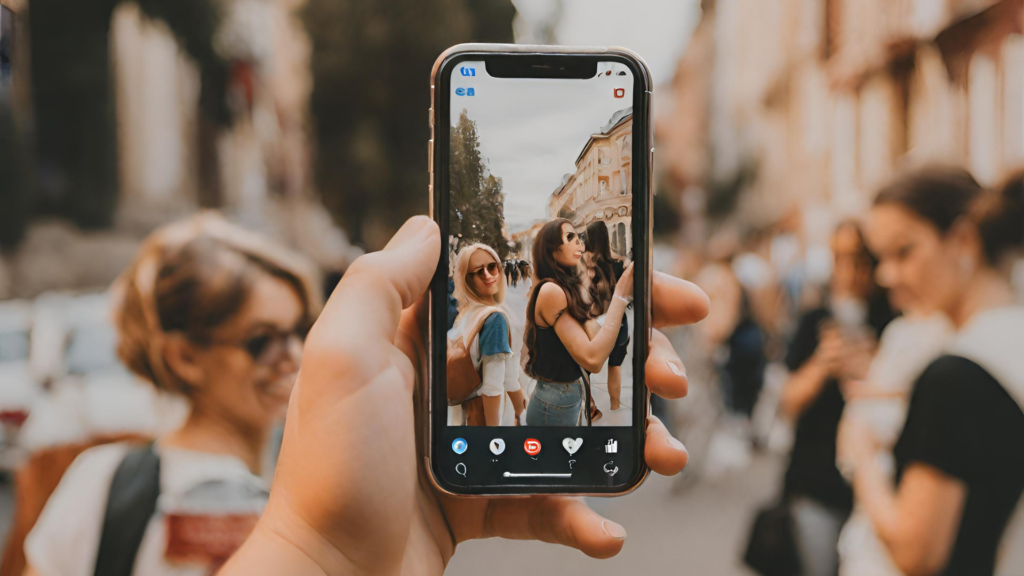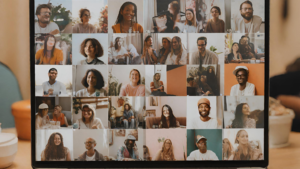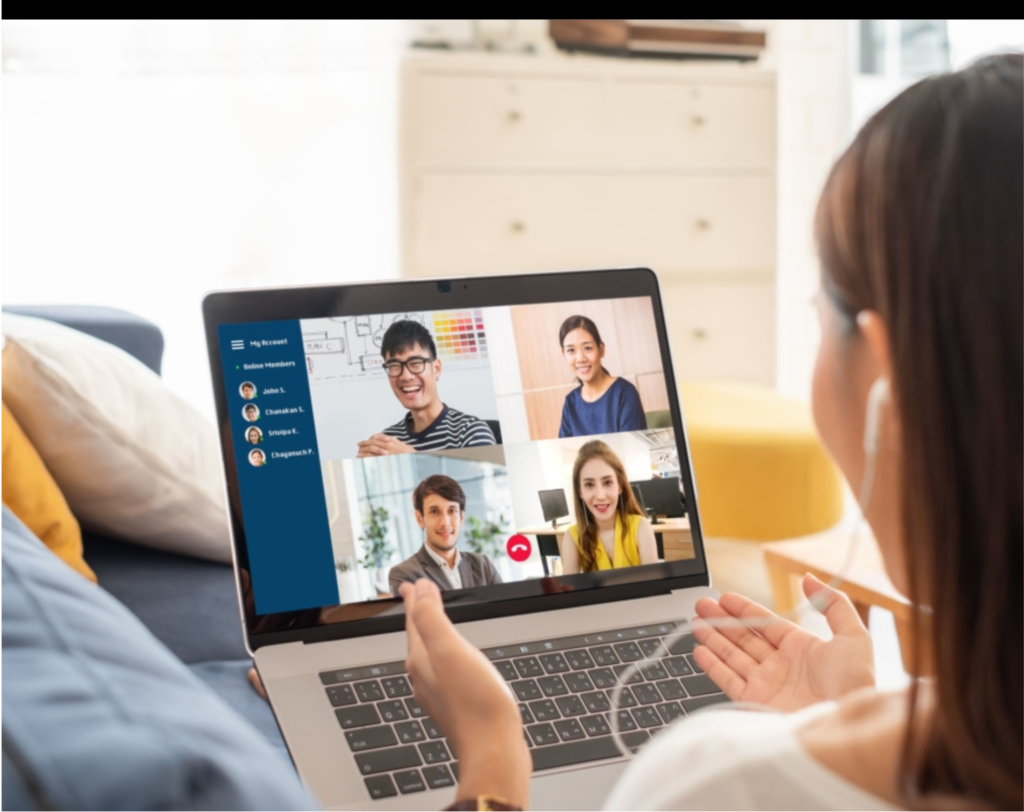
Digital Marketing Blogs
"Let's Learn, Explore, and Connect to the World"
Facebook Groups: Building Targeted Communities and Fostering Brand Loyalty
- Jenelie Hijosa
- Digital Marketing (Digital Business)

Introduction
 The rise of social media in the last twenty years has revolutionized marketing. Initially viewed as simple digital platforms for social interaction and content sharing, social media has evolved into a complex ecosystem of targeted advertising, brand community building, and direct customer engagement. This evolution began with the pioneering platforms of the early 2000s, where businesses first saw potential in reaching vast audiences through relatively uncharted digital territory. The initial approach was primarily one-directional, focusing on broadcasting brand messages rather than engaging with consumers.
The rise of social media in the last twenty years has revolutionized marketing. Initially viewed as simple digital platforms for social interaction and content sharing, social media has evolved into a complex ecosystem of targeted advertising, brand community building, and direct customer engagement. This evolution began with the pioneering platforms of the early 2000s, where businesses first saw potential in reaching vast audiences through relatively uncharted digital territory. The initial approach was primarily one-directional, focusing on broadcasting brand messages rather than engaging with consumers.
As social media platforms grew, so did their features and the sophistication of their algorithms. This growth ushered in an era of enhanced user segmentation and targeted content delivery, allowing brands to tailor their messages more precisely to different audience segments. Among the myriad of platform features, Facebook Groups have emerged as a particularly powerful tool in this digital marketing arsenal. Unlike Facebook Pages, which operate much like a traditional billboard, Facebook Groups offer a more dynamic and interactive environment. Here, brands are not just broadcasters but participants in a community driven by interests and engagement.
 Facebook Groups serve as virtual communities where members can discuss various topics, share content, and interact not just with the brand but also with each other. This setting creates a unique opportunity for businesses to foster deeper relationships with their audience, transforming customers into active community members. Brands can leverage these groups to conduct market research, gather feedback, test new ideas, and improve customer loyalty by providing exclusive experiences and information. Moreover, the algorithmic preference that Facebook gives to group activity ensures higher engagement rates, making these groups a valuable tool for maintaining visibility in users’ feeds.
Facebook Groups serve as virtual communities where members can discuss various topics, share content, and interact not just with the brand but also with each other. This setting creates a unique opportunity for businesses to foster deeper relationships with their audience, transforming customers into active community members. Brands can leverage these groups to conduct market research, gather feedback, test new ideas, and improve customer loyalty by providing exclusive experiences and information. Moreover, the algorithmic preference that Facebook gives to group activity ensures higher engagement rates, making these groups a valuable tool for maintaining visibility in users’ feeds.
In using Facebook Groups, companies tap into the core of modern social media marketing: building relationships. The evolution from simple online presence to interactive community hubs marks a significant shift in how brands connect with consumers. The following sections will explore how to effectively set up, manage, and maximize Facebook Groups to build targeted communities and foster brand loyalty, ensuring that every interaction adds value both for the brand and its customers.
Why Facebook Groups?
 In today’s ever-evolving digital world, Facebook remains a cornerstone of social media marketing due to its vast global user base and robust engagement tools. Among these tools, Facebook Groups stand out as particularly effective for brands looking to deepen their consumer relationships and foster community spirit. Unlike traditional Facebook Pages that are designed for broadcasting messages, Groups offer a platform for two-way interactions that can significantly enhance user engagement and brand loyalty.
In today’s ever-evolving digital world, Facebook remains a cornerstone of social media marketing due to its vast global user base and robust engagement tools. Among these tools, Facebook Groups stand out as particularly effective for brands looking to deepen their consumer relationships and foster community spirit. Unlike traditional Facebook Pages that are designed for broadcasting messages, Groups offer a platform for two-way interactions that can significantly enhance user engagement and brand loyalty.
Enhanced Engagement and Visibility
 Facebook Groups excel at creating a space for active interaction among members. Groups are designed to be communities around shared interests, which naturally encourages more frequent and meaningful interactions among members. Statistics highlight that posts in Facebook Groups have a higher chance of appearing in a member’s feed compared to posts from a page. This is due to Facebook’s algorithm, which prioritizes content from Groups where users interact more regularly. For instance, according to data from Facebook, active group members are likely to spend more time on the platform and engage with content more intensely than the average user. This heightened engagement is crucial not only for keeping the audience interested but also for increasing the visibility of the brand’s content without the direct cost of advertising.
Facebook Groups excel at creating a space for active interaction among members. Groups are designed to be communities around shared interests, which naturally encourages more frequent and meaningful interactions among members. Statistics highlight that posts in Facebook Groups have a higher chance of appearing in a member’s feed compared to posts from a page. This is due to Facebook’s algorithm, which prioritizes content from Groups where users interact more regularly. For instance, according to data from Facebook, active group members are likely to spend more time on the platform and engage with content more intensely than the average user. This heightened engagement is crucial not only for keeping the audience interested but also for increasing the visibility of the brand’s content without the direct cost of advertising.
Tailored Audience Interaction
 Facebook Groups also allow brands to segment their audiences into more targeted communities. For example, a brand can create groups based on product lines, user demographics, or even levels of brand loyalty. This segmentation enables more tailored communication strategies and can help brands deliver more personalized and relevant content. Such relevance increases the value of each interaction to the members, fostering a stronger connection to the brand.
Facebook Groups also allow brands to segment their audiences into more targeted communities. For example, a brand can create groups based on product lines, user demographics, or even levels of brand loyalty. This segmentation enables more tailored communication strategies and can help brands deliver more personalized and relevant content. Such relevance increases the value of each interaction to the members, fostering a stronger connection to the brand.
Direct Benefits for Brands

For brands, the benefits of managing a Facebook Group extend beyond just increased engagement. These groups provide a direct line to some of their most valuable customers – the advocates and repeat buyers who are more likely to provide constructive feedback, praise, and even criticism. By listening to social media conversations, brands can make data-driven product and service adjustments. Additionally, the sense of belonging and community that groups foster can lead to increased customer retention and loyalty. Members of Facebook Groups often perceive their involvement as being part of a special club, enhancing their emotional attachment to the brand.
Moreover, Facebook Groups are a perfect venue for exclusive content, special announcements, and first looks at new products, which can all serve as incentives for users to join and stay active within the group. Offering such exclusives can make members feel valued and special, which is a potent ingredient for brand loyalty.
In summary, Facebook Groups represent a dynamic and impactful element of modern social media strategies. They provide brands with a platform to not only communicate effectively with their audience but also to build a vibrant community that contributes significantly to brand loyalty and customer satisfaction. Because Facebook Groups foster engagement and provide valuable customer insights, they’re a must-have tool for marketers navigating the competitive social media landscape.
Unlocking the Power of Facebook Groups for Digital Marketing
 Identifying your target audience and strategically setting up your Facebook Group is crucial for maximizing its effectiveness as a digital marketing tool. While creating a Group is simple, this guide will walk you through the steps and tips on choosing the right settings and establishing group rules to foster a positive and engaging environment for your ideal members.
Identifying your target audience and strategically setting up your Facebook Group is crucial for maximizing its effectiveness as a digital marketing tool. While creating a Group is simple, this guide will walk you through the steps and tips on choosing the right settings and establishing group rules to foster a positive and engaging environment for your ideal members.
Step-by-Step Guide to Creating a Facebook Group
Log Into Facebook
Start by logging into your Facebook account associated with the brand.
Create the Group:
Navigate to the Groups section found in the main menu on the left side of your Facebook homepage. Click on “Create Group” and enter your group name, which should resonate with the brand and the community’s purpose.
Add Members:
Initially, you’ll need to add at least one member to your group. Begin with colleagues or team members who can help moderate the group in its early stages.
Who Sees Your Group?
Choose the privacy setting that fits your needs. Public groups are open to everyone, while closed groups are discoverable by anyone, and only members can see content. Secret groups require an invite even to find the group.
- Public: In this group, anyone can see the group and its details, like its members and their posts.
- Closed: For closed groups, anyone can find the group and see who’s inside it, but only its members can see its posts.
- Secret: Only the members of secret groups can find the group and see its posts.
- Include relevant keywords
Include relevant keywords as tags to help people searching for similar groups find yours.
Choosing the Right Privacy Settings and Group Type
- Privacy Settings: Choose a setting that aligns with your objectives. For brands looking to build a community, ‘Closed’ is often ideal because it protects users’ privacy while still being discoverable.
- Group Type: Facebook offers different group types, such as Buy and Sell, Gaming, and Social Learning. Select a type that best matches the nature of the community you want to build.
Establishing Group Rules and Guidelines
- Develop Clear Rules: Set clear, enforceable rules about acceptable behavior within the group. Topics might include the prohibition of spam, respect for all members, and rules against harassment.
- Post Guidelines: Make guidelines visible in either the group description or as a pinned post to ensure all members are aware of them from the beginning.
- Moderation Plan: Have a plan for how to handle breaches of rules. Whether it’s a warning system or immediate removal, consistency is key to maintaining a respectful environment.
Setting up your Facebook Group with careful consideration of these elements will help lay a solid foundation for a vibrant and engaged community. This setup not only helps manage the group more effectively but also ensures that the group serves its purpose and aligns with your brand’s marketing goals.
Strategies for Engagement in Facebook Groups
Engaging the members of a Facebook Group is crucial to its success. Active and engaged groups can significantly amplify brand visibility and loyalty. To achieve this, brands must employ strategic practices that foster interaction and maximize Facebook’s numerous features designed to boost user activity. Here are some best practices and content ideas for initiating and maintaining engagement in Facebook Groups.
Best Practices for Initiating and Maintaining Engagement
- Regular Posting Schedule: Consistency is key in keeping the group active and engaged. Establish a regular posting schedule that keeps the content fresh but not overwhelming. This predictability helps members know when to expect new content, increasing the likelihood they will check in regularly.
- Encourage Member Posts: Make your group a platform where members feel comfortable and encouraged to share their stories, questions, and experiences. This not only increases content variety but also fosters a community atmosphere.
- Responsive Interaction: When members post comments or questions, prompt responses from the brand’s side can significantly boost engagement. This interaction shows that the brand values member contributions, encouraging more open communication and activity.
- Group Moderation: Active moderation helps maintain a positive environment and can spur engagement by highlighting quality posts, managing conflicts, and ensuring that all interactions adhere to group guidelines.
Content Ideas That Drive Interaction
- Polls: Simple and quick to create, polls are an excellent way to get instant engagement from members. They can be used to gather opinions on new products, services, or just general preferences.
- Live Videos: Hosting live videos, such as Q&A sessions with experts or behind-the-scenes looks at your business, adds a human touch to your digital presence. It also gives members a chance to interact in real-time, which can be particularly engaging.
- Challenges and Contests: Organize fun and relevant challenges or contests with small prizes. This can drive posts and interactions from members who are eager to participate and see who wins.
- Educational Content: Share tips, tutorials, and how-tos that relate to your brand or industry. Educational content not only engages but also adds value to your members’ experiences in the group.
Using Facebook's Built-in Features to Enhance Group Activity
- Units: For groups dedicated to learning or themed discussions, using the ‘Social Learning’ group type allows you to organize posts into modules or units, making it easier for members to follow along and learn at their own pace.
- Events: Create events for online or offline gatherings, product launches, or special promotion days. Events can create buzz and anticipation among your group members.
- Watch Parties: Utilize the Watch Party feature to view videos together as a group. This feature can be particularly engaging for live events, tutorials, or just fun content relevant to the group’s interests.
- Mentorship Program: Set up a mentorship program within your group to connect more experienced members with newbies. This can help foster connections and provide personal value to participants.
By implementing these strategies and utilizing the robust tools provided by Facebook, brands can effectively enhance engagement within their groups. Engaged groups are more likely to develop a loyal community, fostering long-term relationships and promoting sustained brand growth.
Building Brand Loyalty through Facebook Groups
 Facebook Groups are not just platforms for conversation; they are potent tools for building deep, lasting brand loyalty. Brands can transform casual followers into staunch advocates through personalized interactions and a strong sense of community. Below, we explore how some brands have successfully built communities, the techniques for personalizing interactions, and ways to measure the impact of these engagements on brand loyalty.
Facebook Groups are not just platforms for conversation; they are potent tools for building deep, lasting brand loyalty. Brands can transform casual followers into staunch advocates through personalized interactions and a strong sense of community. Below, we explore how some brands have successfully built communities, the techniques for personalizing interactions, and ways to measure the impact of these engagements on brand loyalty.
Case Studies of Successful Brand Communities

- Sephora Beauty Insider Community: Sephora’s community allows members to discuss beauty products, share makeup tips, and post product reviews. By creating an environment where beauty enthusiasts can gather and share, Sephora enhances customer loyalty and simultaneously gains invaluable insights into consumer preferences and trends.

- Peloton Member Page: Peloton uses its Facebook group to connect with its fitness equipment users. Members share workout achievements, encourage one another, and participate in exclusive challenges. This shared fitness journey not only keeps members motivated but also deeply integrates Peloton into their daily lives, enhancing loyalty.

- Glossier: This beauty brand takes a community-first approach, frequently using its Facebook Group to engage directly with customers, gather feedback on products, and test ideas before launch. This direct interaction and inclusion in product development make members feel valued and more connected to the brand.
Techniques for Personalizing Interactions
- Address Members by Name: Personalize interactions by addressing members by name in responses to their posts or comments. This small touch can make communications feel more personal and valued.
- Exclusive Offers: Provide group members with exclusive offers, discounts, or first access to new products. Exclusivity fosters a VIP feeling among members, enhancing their loyalty and encouraging them to stay active in the group.
- Member Spotlights: Regularly feature members’ stories or Content. Whether it’s a customer success story or a showcase of how they use your product, this recognition can significantly increase member engagement and loyalty.
- Tailored Content: Analyze what type of Content generates the most engagement in your group and tailor your posts to match these preferences. This ensures that the Content is relevant and valuable to your audience.
Measuring the Impact of Community Engagement on Brand Loyalty
- Surveys and Feedback: Regularly survey your group members to assess their satisfaction with the group and your products. This feedback can serve as a direct metric of loyalty and engagement.
- Engagement Metrics: Track likes, comments, and shares within the group to gauge engagement levels. High engagement often correlates with higher loyalty.
- Retention Rates: Monitor how long members stay in the group and their activity levels. Longer retention and sustained activity can indicate strong loyalty.
- Sales Conversion: Track sales that can be directly linked back to group activities or exclusive group offers. An uptick in sales from group members is a tangible indicator of the effectiveness of the group in building brand loyalty.
Engaging in Facebook Groups cultivates a community of loyal brand fans. These fans feel a deeper connection to the brand, making them more likely to become vocal advocates. This strategy not only enhances brand loyalty but also contributes significantly to the overall brand equity.
Challenges and Solutions in Managing Facebook Groups
 Managing Facebook Groups effectively presents several challenges that can hinder their potential as tools for building brand loyalty and engagement. Here, we discuss some common obstacles and provide practical solutions to help brands overcome these hurdles.
Managing Facebook Groups effectively presents several challenges that can hinder their potential as tools for building brand loyalty and engagement. Here, we discuss some common obstacles and provide practical solutions to help brands overcome these hurdles.
Common Challenges
- Overwhelming Volume of Posts and Comments: As groups grow, the sheer volume of interactions can become difficult to manage, leading to important discussions or questions being overlooked.
- Maintaining a Consistent Tone and Policy: Ensuring that all communications within a group adhere to the brand’s tone and policies can be challenging, especially with multiple moderators or group admins.
- Handling Negative Behavior: Negative comments or spam can disrupt the positive environment of the group, affecting member experience and engagement.
- Keeping Content Engaging and Relevant: Continuously generating Content that is both engaging and relevant to all group members can be a daunting task for brands.
Practical Solutions and Tools
- Automated Moderation Tools: Utilize tools such as Facebook’s automated moderation settings to help manage the volume of posts and filter out spam or inappropriate Content. Setting up keyword alerts for certain phrases can also help in quickly addressing negative behavior or off-topic discussions.
- Establish Clear Guidelines: Develop and enforce a clear set of guidelines that outline acceptable behavior and the type of Content allowed in the group. Make these guidelines easily accessible to all members to ensure everyone understands the group’s rules.
- Dedicated Community Manager: Employing a dedicated community manager can help maintain a consistent tone across all posts and interactions. This role can also take proactive steps in engaging members, organizing Content, and moderating discussions to ensure a positive atmosphere.
- Stay Ahead of the Game: Plan Engaging Content: Organize for Success: Create a Content Calendar to Schedule Engaging Posts. This helps in maintaining a consistent flow of engaging and relevant Content. Go Beyond Text: Diversify Your Content with Polls, Videos, and User-Generated Content.
- Regular Review and Feedback Sessions: Conduct regular reviews of group activity and member feedback to understand what works and what doesn’t. By constantly analyzing engagement, brands can fine-tune their approach and Content to resonate more effectively with their audience.
By addressing these challenges with effective strategies and tools, brands can enhance their Facebook Group management and create more vibrant, engaged communities that contribute significantly to building lasting brand loyalty.
Future of Facebook Groups in Marketing
 Facebook Groups have become a vital component of digital marketing strategies for many brands, offering a unique way to engage directly with customers and cultivate a community. As we look to the future, several trends and potential changes could shape how Facebook manages or prioritizes these groups, further influencing their role in broader digital marketing campaigns.
Facebook Groups have become a vital component of digital marketing strategies for many brands, offering a unique way to engage directly with customers and cultivate a community. As we look to the future, several trends and potential changes could shape how Facebook manages or prioritizes these groups, further influencing their role in broader digital marketing campaigns.
Trends and Potential Changes in Facebook Group Management
- Increased Personalization and Automation: Facebook may enhance its use of artificial intelligence to offer more personalized content feeds within groups. This could mean smarter recommendations for group members based on their activity, preferences, and engagement history, making content more relevant and increasing interaction rates.
- Improved Analytics Tools: Anticipate more advanced analytics tools from Facebook, providing group administrators with deeper insights into member behavior and engagement metrics. This data will be crucial for brands to tailor their strategies effectively within groups and measure ROI more accurately.
- Integration with Other Platforms: Facebook could integrate more closely with other platforms and services, such as Instagram or WhatsApp. This integration would facilitate cross-platform community building, allowing brands to manage a unified strategy across multiple touchpoints seamlessly.
- Enhanced Moderation Features: As the need for safer online spaces increases, expect Facebook to introduce more robust moderation tools to help group admins maintain a positive and inclusive environment. This could include more sophisticated filtering options and better support systems for reporting and addressing grievances.
Role of Facebook Groups in Digital Marketing Strategy
 Facebook Groups can serve multiple functions in a digital marketing strategy, transcending traditional advertising by creating a genuine sense of community among users. Here’s how they fit into the broader marketing landscape:
Facebook Groups can serve multiple functions in a digital marketing strategy, transcending traditional advertising by creating a genuine sense of community among users. Here’s how they fit into the broader marketing landscape:
- Nurturing Customer Loyalty: Groups are an excellent tool for fostering loyalty and retention, as they encourage ongoing engagement and provide a platform for direct customer service and support.
- Market Research: By observing and interacting with group members, brands can gather honest feedback and insights directly from their target audience, which can inform product development and marketing strategies.
- Content Distribution: Groups provide a controlled environment to distribute content directly to an engaged audience, ensuring higher visibility and interaction compared to other channels like public Facebook pages or paid ads.
- Community-Led Growth: An active and engaged community can lead to organic growth through word-of-mouth, as members share their positive experiences within their networks.
 Looking ahead, Facebook Groups are likely to become even more integrated into digital marketing strategies. Brands that leverage these platforms effectively will not only see enhanced customer engagement but also more profound insights into their market, contributing to more personalized and successful marketing efforts.
Looking ahead, Facebook Groups are likely to become even more integrated into digital marketing strategies. Brands that leverage these platforms effectively will not only see enhanced customer engagement but also more profound insights into their market, contributing to more personalized and successful marketing efforts.
References
- How Companies Use Facebook For Marketing ? | Good Selects. https://goodselects.com/how-companies-use-facebook-for-marketing/
- Unlocking the Power of Brand Communities. https://www.piggy.eu/glossary/brand-community
- Everything You Need to Know About Facebook Groups | CitizenSide. https://citizenside.com/technology/everything-you-need-to-know-about-facebook-groups/
Reading comprehension quiz
Check out our books and more!
A Beginner's Guide to Video Editing: Be a Pro in Just 24 Hours
Discover your inner editing abilities with this complete guide made for beginners to master the art of video editing smoothly. ‘A Beginner’s Guide to Video Editing: Be a Pro in Just 24 Hours’ is your way to discover the secrets of professional-grade editing within a day.
Check out our Blogs!
Read our everyday blogs and expand your knowledge about English and Video Editing here in SEKAEL.


Learn through Basic English Grammar Blogs by widening your English vocabulary and learning English Grammar.


